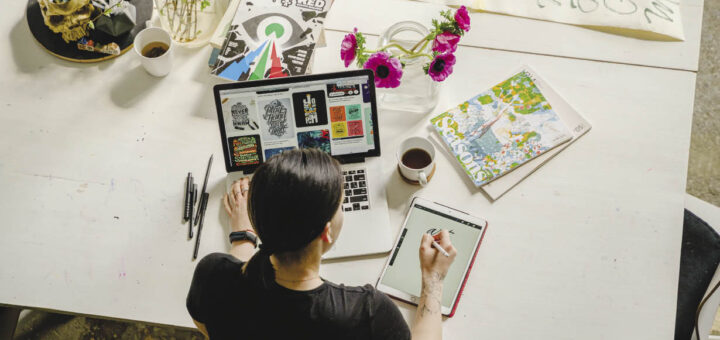The rise of digital artwork in a (mainly) digital time

By Cassie Weiss, Features Editor
Artwork has always been an important part of humanity. A piece can provoke anger, happiness, love or in some cases, even extreme despair. The more an artist can tap into a person’s senses, the stronger a connection can be formed — whether that be to the artist themselves or to someone who can relate to the piece in the same way as the person who shared it.
The thing about art, though, is that it is always changing. New mediums are created constantly — especially with the rise of technology. An artist no longer needs a pen and paper when they have a tablet that does the processing for them.
“Software is so much more accessible than it used to be,” says Matt Johnson, a graphic designer who works closely with the film and electronic industries within Calgary.
“There are a ton of great apps to create digital art pieces in seconds, that would have taken a lot of know-how only a couple of years ago.”
Johnson says access to the creation of digital art just keeps getting easier, regardless of the form in which an artist hopes to create.
“Video, audio, interactive; it’s all at your fingertips now.”
In the past, an oil painting on canvas would need to be physically displayed for its artist to receive feedback, whereas now, all it takes is for something to be uploaded online. This is not necessarily a good or a bad thing — it just means that with the increased use of technology, the market becomes slightly more saturated.
“I remember seeking out cool art on DeviantArt when I was in high school,” says Johnson about a website that features artwork of many forms.
“Now, I don’t even know if that site exists. As an artist using the internet, I see art all the time. It’s definitely not all good, but I appreciate that it is so prevalent.”
The rise of social media, much like the rise of technology, has given people access to a form of communication and exposure that has never been available before. Despite this, people do have to be careful — regardless of the passion and talent put into their work.
Although, during the COVID-19 pandemic, it is hard to be careful when it comes to hours spent online. Scrolling through timelines is just another method to pass the time, and it is becoming extremely easy for artists to feel down on themselves, according to Johnson.
“I had surges [of motivation] at the beginning of quarantine, and at the end before I returned to work. But, in the middle I felt very lost and unsure about my own artwork.”
With most of Johnson’s work revolved around electronic music events, all of which have been cancelled or postponed, focusing was difficult for him without an end in sight. But, the reality of the pandemic was also a catalyst.
“It does seem like a lot of people were able to pull their attention away from the presentation side of their work and hone in on the creative side, which is a good thing in the long term,” he says.
“I personally completed a short course on Unity — a video game engine — and tried my hand at 3D modelling for the first time. I have been seeing many artists pursuing coding, which just seems like a natural extension for many of these artists.”
Now, artists across the globe are getting used to the fact that people are mainly seeing their work through phones or laptops.
“You don’t have to worry about how it is going to look on a larger scale, which can be a bit liberating,” says Johnson.
As for what’s next, Johnson says that “as with anything in capitalism, it’s adapt or die.” With live art show opportunities now a thing of the past, being successful in the time of a pandemic comes back around to the use of social media and the ability to market yourself online.
“I don’t think we will ever be able to emulate the experience of being in the same room with like-minded people, but this is the way things are going. Internet-based outlets are almost the only outlets artists have for the moment, so they are definitely important.”


